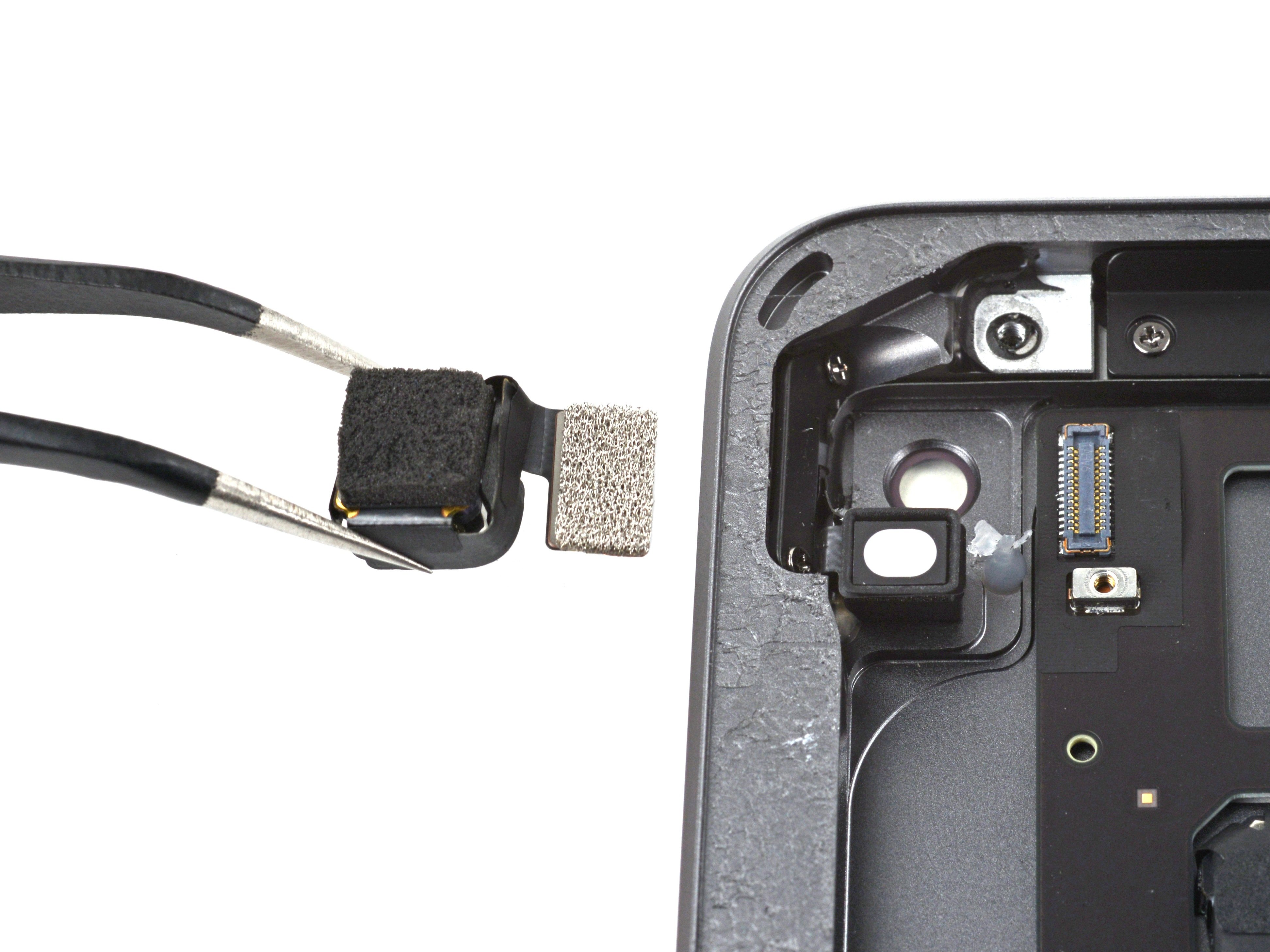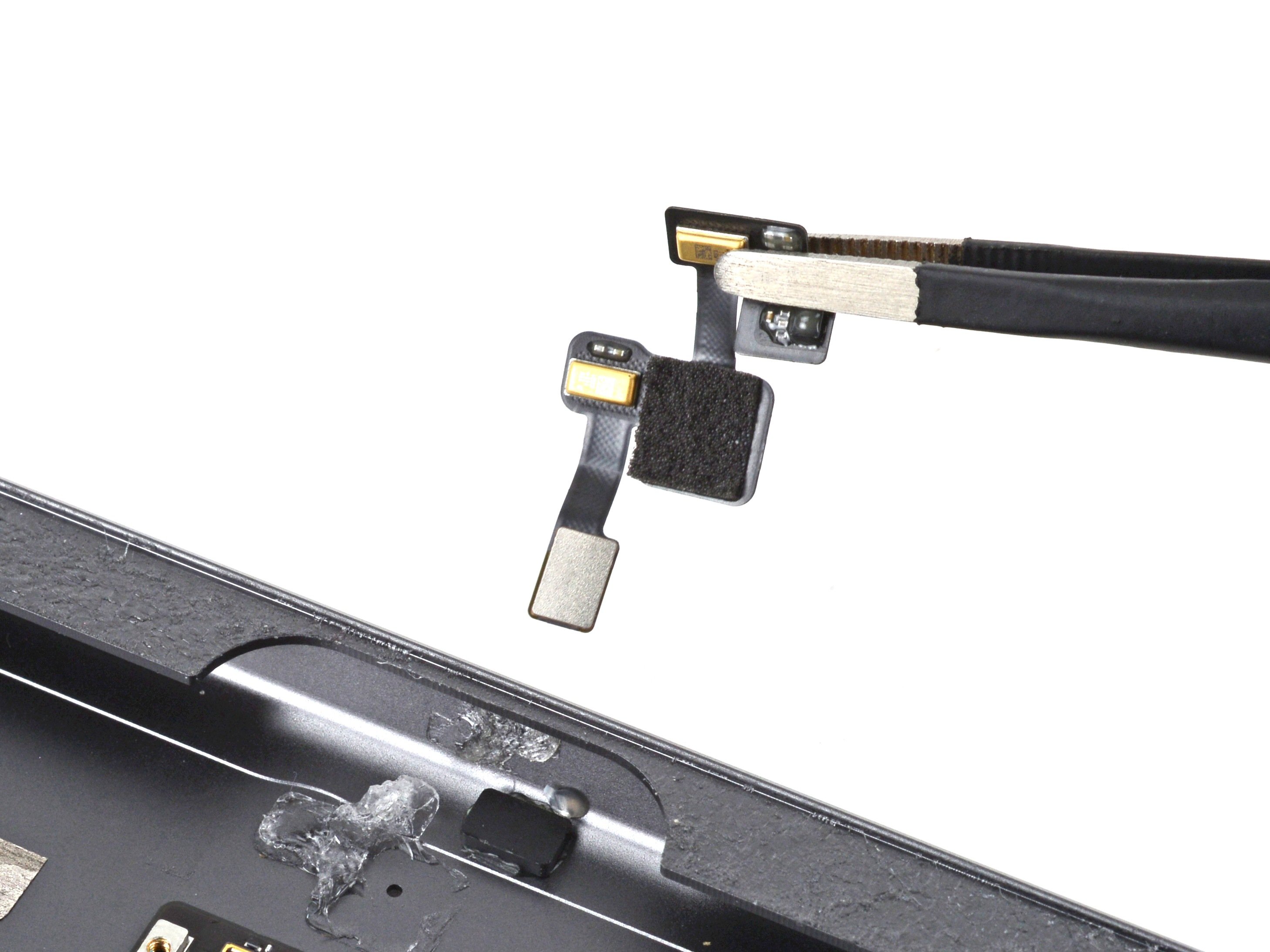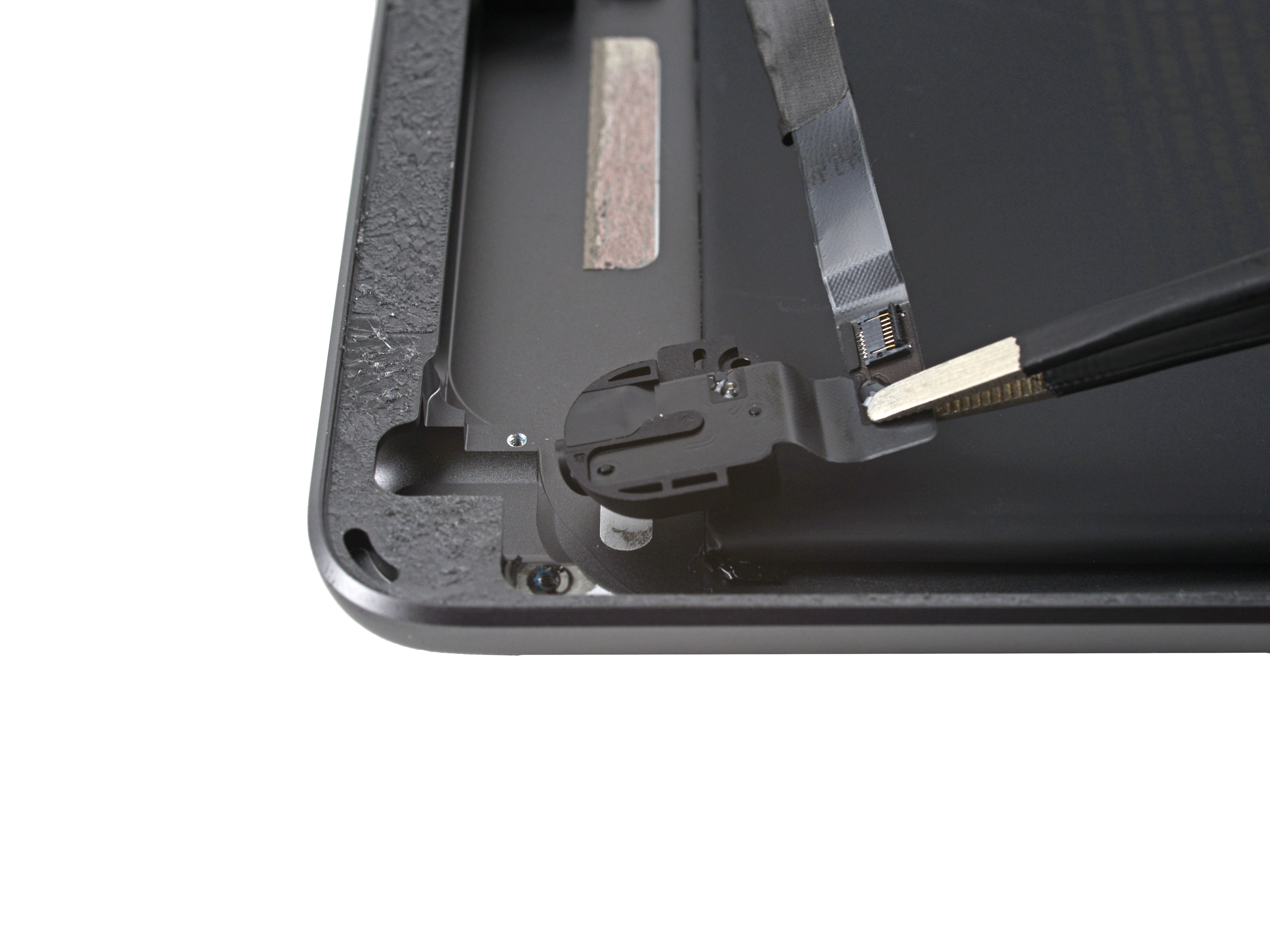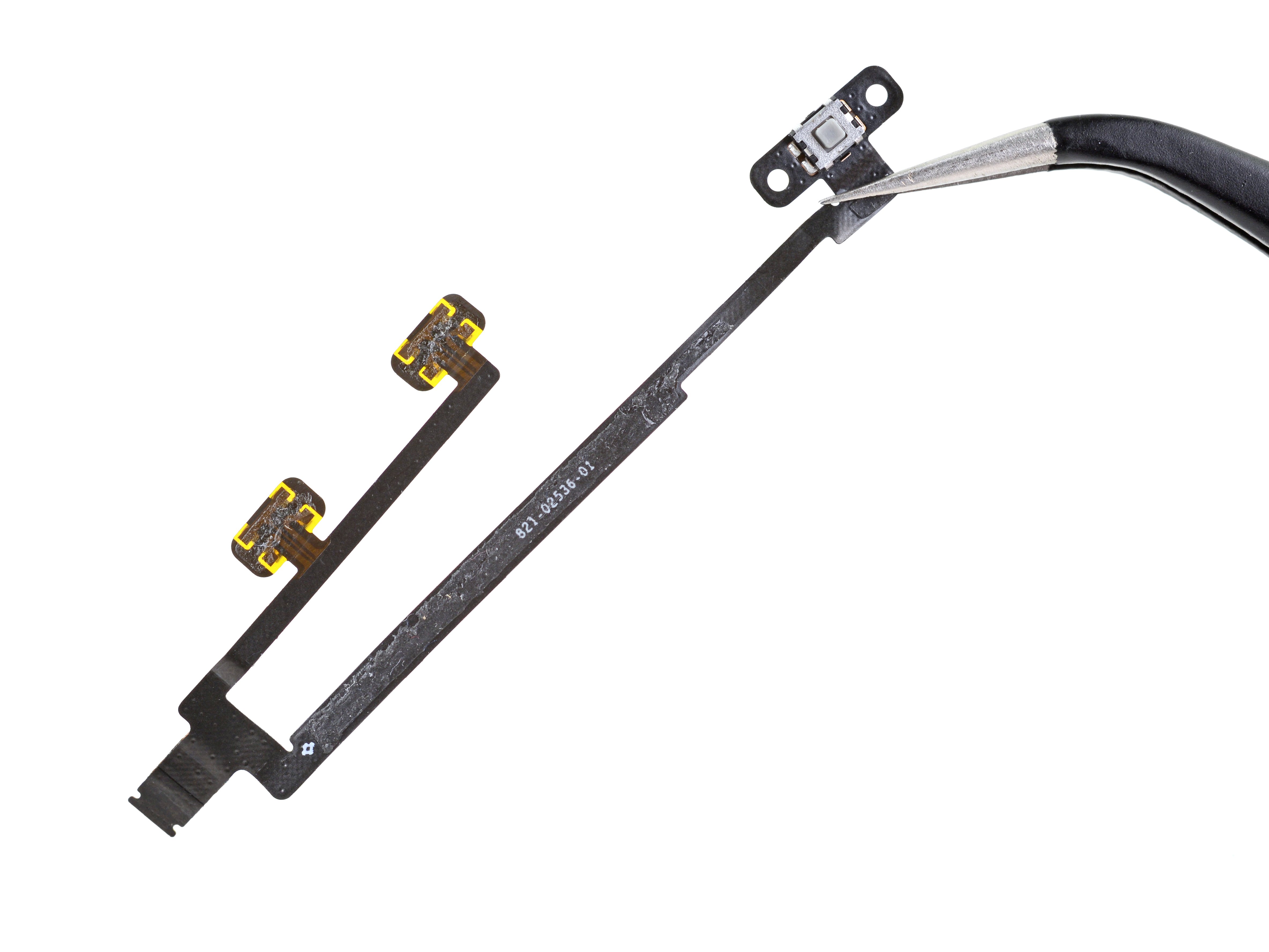How to Replace iPad 4 GSM Headphone Jack Board
Duration: 45 minutes
Steps: 59 Steps
Heads up! Before diving into this repair adventure, make sure you’ve got a clean workspace and all your tools ready. It’s way easier to fix things when you’re organized. And if you find yourself in a pickle, don’t hesitate to schedule a repair! We’ve got your back.
Get ready to dive into the world of tech repair! In this guide, we’ll show you how to swap out that headphone jack board like a pro. If you hit a snag, don’t fret! Just schedule a repair and let us help you out.
Step 1
It’s a great idea to give your microwave a little TLC before you dive into this. A quick clean-up will prevent any pesky leftover gunk from sticking to your iOpener. Trust us, your future self will thank you!
– Pop the iOpener right in the middle of the microwave. Let’s get that thing heated up!
Tools Used
Step 2
Hey there! Just a friendly reminder to keep an eye on that iOpener while you’re working your magic. Overheating it could lead to a bit of a drama—like bursting! So, let’s keep it under 100˚C (212˚F), shall we?
If your iOpener starts looking a little puffy, give it some space. No touching, please!
If the middle of your iOpener is still too toasty to handle, keep it in the game while it cools down a bit more before you give it another heat-up. A well-heated iOpener should feel cozy for about 10 minutes.
– Give your iOpener a warm-up in the microwave for about thirty seconds. It’s like a spa day for your repair buddy!
– As you work through the repair, keep an eye on the iOpener—when it starts to cool down, just pop it back in the microwave for another thirty seconds. It’s all about keeping the heat alive!
Tools Used
Step 3
The iOpener gets super toasty, so handle it with care! A trusty oven mitt can be your best buddy here if things get a bit too hot to handle.
– Carefully take the iOpener out of the microwave, gripping one of the flat ends to steer clear of the toasty center. Keep it cool!
Tools Used
Step 4
Don’t have a microwave? No worries! Just take a dip and heat your iOpener in some boiling water instead.
– Grab a pot or pan and fill it up with enough water to completely dunk that iOpener.
– Crank up the heat and bring the water to a rolling boil, then turn off the heat like a pro.
– Carefully pop the iOpener into the hot water for about 2-3 minutes. Make sure it’s getting a nice, cozy soak down there.
– Use some tongs to fish out the warmed-up iOpener from its steamy bath.
– Give the iOpener a good towel dry; we want it nice and fresh!
– Voila! Your iOpener is all set for action! If it needs a little more heat, just repeat the hot water dance: boil, turn off the heat, and let it chill in the water for another 2-3 minutes.
Tools Used
Step 5
– Grab your trusty SIM eject tool or a straightened paperclip and gently pop out that SIM tray like a pro!
Step 6
– Gently slide the SIM tray out of its cozy spot and give it a little wiggle to free it from your iPad.
– If you’re swapping out the SIM card, just pop it out of the tray and slide in the new one like a pro!
Step 7
Put on those safety glasses to keep your peepers protected, and remember to treat that LCD screen with care—it’s more delicate than it looks!
– If your display glass is looking a bit worse for wear, let’s keep things safe and sound by taping it up. Trust us, it’s the best way to avoid any extra shards flying around during your repair adventure!
– Grab some clear packing tape and lay it down in overlapping strips over the iPad’s display until the whole face is snugly covered. Think of it as giving your device a protective hug!
– Now, just follow along with the rest of the guide as best as you can. Just a heads up: once the glass starts to break, it might get a bit feisty and crack more as you work. If that happens, you might need to channel your inner DIY guru and use a metal prying tool to scoop the glass out. No worries, you’ve got this!
Step 8
Hey there! Just a friendly reminder: while you’re diving into this repair, you might encounter some sharp glass edges. To keep those peepers safe from any unexpected flying bits, we highly suggest rocking a pair of safety glasses. Better safe than sorry, right?
– Position the iOpener flat against the right edge of your iPad, ensuring it makes solid contact with the surface. Give it a little love by smoothing it out.
– Allow the bag to chill on the iPad for about 90 seconds before diving into opening up the front panel.
Tools Used
Step 9
Getting that stubborn wedged tip of the opening tool between the glass and plastic might take a little elbow grease. Just take your time and stay cool! Wiggle that plastic tool gently back and forth as needed, and you’ll be on your way.
– Hey there! You’ll notice a little gap in the adhesive ring on the upper right corner of your iPad, about 2.0 inches (~5 cm) from the top. Time to take advantage of that sneaky spot!
– Now, line up your tool with the mute button. Gently insert the tip of a plastic opening tool into the gap between the front glass and the plastic bezel. Just slide in the very tip, enough to give that crack a little extra room.
Step 11
– With the tip of the plastic opening tool snugly nestled between the front glass and plastic bezel, slide a plastic opening pick into the gap right next to your trusty tool. You’re doing great!
Step 12
– Gently detach the plastic opening tool from your iPad, then slide the opening pick in a little deeper under the front glass, aiming for about half an inch. You’ve got this!
Step 14
The adhesive is super strong, so you might need to put in a bit of elbow grease. Just take your time and be gentle with it.
If you can spot the tip of the opening pick peeking out from under the front glass, gently pull it out a bit. While it’s totally safe to use the pick this deep, just a heads up—it might leave some adhesive residue on the LCD. No biggie, just part of the adventure!
– As the iOpener warms up the bottom edge, let’s get busy freeing the adhesive along the right edge of your iPad.
– Carefully slide the opening pick down the edge of the iPad, peeling away the adhesive as you glide along.
Tools Used
Step 15
As you peel back the adhesive, you might want to slide that warm iOpener back over to the right edge of the iPad. This little move depends on how long the iPad has been chilling while you’ve been working your magic.
– If your opening pick is having a tough time with the adhesive, just give it a little roll along the side of the iPad to help loosen things up.
Tools Used
Step 16
– Before you dive in and pop that first opening pick from the bottom corner of your iPad, slide a second pick under the right edge of the front glass. This little buddy will help keep the adhesive from getting all clingy again.
– Give your iOpener a little reheat love, then place it at the top edge of the iPad.
Tools Used
Step 17
The Wi-Fi antenna is snugly fastened to the bottom right corner of your iPad’s rear case with screws and a cable. Given the unique positioning of the Wi-Fi antenna, it’s super important to tread carefully; otherwise, you might end up causing some serious damage to it. So, let’s keep it cool and take our time!
– Alright, folks, it’s time to tread carefully! The next few steps are all about precision and a gentle touch.
– You’ll need to peel back the adhesive that’s holding the antenna to the front panel. Just be super careful not to mess with the delicate connections at the bottom of the iPad. Take your time and follow the upcoming steps closely!
Step 18
Hey there! Just a friendly reminder: don’t slide that pick too far past the bottom right corner. You might accidentally give the Wi-Fi antenna a little love tap, and we wouldn’t want that!
– Gently glide the opening pick around the bottom right corner of your iPad, freeing up that stubborn adhesive like a pro.
Step 19
Alright, friend! As you glide that opening pick along the bottom right edge of the front panel, keep an eye out! The Wi-Fi antenna is hanging out right near the corner, and it can easily get snipped if the adhesive decides to misbehave. So, be gentle and steady!
Just give the pick a little tug—no need to yank it all the way out! Keep about 1/8″ (3 mm) of the tip snugly under that front glass.
– Gently glide the opening pick along the bottom edge of the iPad to peel back the adhesive over the Wi-Fi antenna. You’re doing great!
Step 20
– Once you’ve cruised past the Wi-Fi antenna (that’s about 3″ or 75 mm from the right edge, right next to the home button), slide that opening pick back in all the way.
– Now, glide the pick to the right to break free the adhesive that’s keeping the Wi-Fi antenna snug against the front glass.
Step 21
Keep it cool, friend! Don’t heat that iOpener for more than a minute at a time, and give it a breather for at least two minutes before you heat it up again. Your repair journey will thank you!
If the adhesive has gotten a bit chilly along the bottom edge, just give the iOpener a quick reheating session to warm things up where you’re working.
– Keep on peeling away the adhesive at the bottom of your iPad! Make sure to pull that opening pick out far enough to navigate around the home button. Once you’re past that little buddy, slide the pick back in to a depth of about 1/2 inch (10 mm). You’re doing great!
Tools Used
Step 22
– Keep peeling that adhesive along the bottom edge of your iPad like a pro!
– Just slide the opening pick under the front glass close to the home button and let it hang out there for a bit.
Step 24
If the adhesive has cooled down too much, simply swap out the iOpener along the top edge and keep going. If your iOpener is feeling a bit chilly, just give it another heat-up!
– Gently glide the opening pick along the top edge of your iPad, giving it a little tug to navigate around the front-facing camera bracket.
– The adhesive in this area is quite stubborn, so you might need to apply some muscle. Just take your time and stay steady to avoid any mishaps that could hurt you or your iPad.
– If your opening pick starts to feel like it’s stuck in the adhesive, try giving it a little ‘roll’ as demonstrated in step 9.
Tools Used
Step 25
If the adhesive is feeling nice and toasty, go ahead and take the iOpener off the iPad for easier handling. But if it’s still holding on tight, just give that iOpener another heat-up and rest it on the left edge while you tackle the task at hand.
– Keep peeling away that stubborn adhesive along the top edge of your iPad, and smoothly glide the opening pick around the top left corner. You’re doing great!
Tools Used
Step 26
The digitizer cable is nestled about 2″ (50 mm) from the bottom of your iPad. When you’re sliding that pick, make sure to stop when you’re around 2.25″ (60 mm) from the bottom. Keep it steady and you’ll be golden!
– Gently glide the opening pick along the left edge of your iPad, peeling away the adhesive as you go. The adhesive is pretty slim here thanks to the digitizer running along the entire left side. Just be careful to keep the pick no deeper than about 1/2 inch (10 mm) to avoid any mishaps with the digitizer.
Step 27
Be cautious! The bottom of the digitizer cable is just about an inch (25 mm) away from the bottom of the iPad. Take your time and handle it gently to avoid accidentally cutting this cable.
– With the trusty opening pick still nestled under the bottom edge of your iPad, gently coax the adhesive loose at the bottom left corner.
Step 28
– With one of those handy opening picks, gently lift the bottom right corner of the iPad and hold it with your fingers. Just take it nice and easy, you’ve got this!
Step 29
Watch out for any leftover adhesive that might still be hanging around! Grab an opening pick and gently slice through any sticky spots that could be keeping the front panel in place.
– Grab your iPad by the top and bottom right corners and gently twist the front glass away from the device. You’ve got this!
– When putting it all back together, don’t forget to use a microfiber cloth and some compressed air to give that LCD a good clean-up, making sure to wipe away any dust or fingerprints before you reinstall the glass.
Step 30
The bottom left screw is hiding behind the home button ribbon cable connector. Gently nudge that cable aside so you can access and remove the bottom left screw with ease.
– Take out those four 2 mm Phillips #00 screws that are keeping the LCD snug against the aluminum frame. You’ve got this!
Step 31
Handle the LCD with care! That ribbon cable is a bit delicate and could snap if it gets too much bending action.
– Grab your trusty plastic opening tool or a spudger and gently lift the right edge of the LCD away from the iPad. You’ve got this!
– Now, swing that LCD around its left edge and lay it down on the front glass panel like it’s taking a well-deserved rest.
Tools Used
Step 32
– Grab your trusty spudger and gently lift the tape that’s holding down the LCD ribbon cable connector. You’ve got this!
Tools Used
Step 33
– Gently lift the little retaining flap on the LCD ribbon cable ZIF connector, just like a secret door waiting to be opened!
– With a bit of finesse, use your fingers or some trusty tweezers to wiggle the LCD ribbon cable out of its cozy home on the logic board.
– If the LCD screen decides to play hard to get and doesn’t light up after you’ve reconnected the ZIF connector, don’t fret! Just give your iPad a little wake-up call by holding down the power button and home button for about ten seconds until you see that iconic Apple logo. You’ve got this!
Tools Used
Step 34
– Gently lift the LCD away from the front panel without touching the front. You’ve got this!
Step 35
If you’ve got some electrical tape hanging around, go ahead and peel it off the Wi-Fi antenna, speaker cable, and home button ribbon cable. Let’s get those connections clear!
Step 37
– Grab a trusty pair of tweezers and gently pull the home button ribbon cable straight out of its cozy socket on the logic board. You’ve got this!
Tools Used
Step 39
– With the spudger in hand, gently lift the tape that’s holding down the digitizer ribbon cable to the logic board. You’ve got this!
Tools Used
Step 40
– Gently lift the retaining flap on both of the digitizer ribbon cable ZIF connectors. Let’s get this part ready for action!
Step 41
– Grab your trusty spudger and gently pry up the adhesive holding down the digitizer ribbon cable. You’re doing great!
– Once it’s loosened up, smoothly pull the digitizer ribbon cable straight out from its cozy little sockets on the logic board. Easy peasy!
Tools Used
Step 42
– Gently lift the digitizer ribbon cable and grab your trusty spudger. Use the flat end to carefully coax the adhesive loose that’s holding the cable to the rear aluminum case. You’ve got this!
Tools Used
Step 43
– With a gentle tug, use your fingers to slide that digitizer ribbon cable out from its cozy spot in the aluminum frame.
– Now, let’s get that front panel off the iPad and give it some breathing room!
Step 44
– Gently peel back that trusty piece of electrical tape covering the headphone jack assembly cable connector. It’s time to let it breathe!
– Now, grab your spudger and, with a little finesse, flip up the retaining flap on both of the ZIF connectors that are holding the headphone jack cable snugly to the logic board. You’re doing great!
Tools Used
Step 45
– Gently slide the flat end of a spudger under the headphone jack assembly cable to free it from the adhesive that’s keeping it snug against the rear aluminum frame.
– Carefully pull the headphone jack assembly cable straight out from its cozy spot on the logic board.
Tools Used
Step 46
– Gently peel back that piece of tape that’s guarding the SIM board cable ZIF connector.
– Give the retaining flap on the SIM board cable ZIF connector a little flip up!
– Now, with the tip of your trusty spudger, carefully pull the SIM board cable straight out of its cozy socket on the logic board.
Tools Used
Step 47
– Unscrew the three 1.75 mm Phillips #00 screws that are keeping the SIM board snugly attached to the aluminum frame. You’re doing great!
Step 48
As you gently move the headphone jack assembly cable aside, remember to take it easy on the headphone jack itself—yanking too hard could lead to an unexpected breakup!
– While keeping the headphone jack assembly cable clear, gently take out the SIM board from your iPad. Remember, you’re doing great!
Step 49
– Gently peel away the adhesive tape that’s holding the headphone jack assembly in place. You’ve got this!
Step 50
– Gently unscrew the lone 2.6 mm Phillips #0 screw that’s keeping the camera cable cozy with the headphone jack assembly. You’re almost there!
Step 51
– Grab your trusty spudger and gently pop the front-facing camera out of its cozy little spot on the headphone jack assembly.
– Now, while you’re still holding that spudger, give it a little slide to the right to free the adhesive that’s keeping the camera cable snug.
Tools Used
Step 52
– Grab your trusty spudger and gently lift the retaining flap on the microphone cable ZIF connector.
– Slide the spudger under the microphone ribbon cable and pop it out of its ZIF connector like a pro.
– Now, give that spudger a little shimmy to the left to break free the adhesive that’s keeping the microphone ribbon cable snug against the headphone jack assembly.
Tools Used
Step 53
– Gently use the flat end of the spudger to lift the antenna connector cable out of its cozy home on the headphone jack assembly board. You’ve got this!
Tools Used
Step 54
– Give that retaining flap a little lift to free the volume/power button ribbon cable connector from the headphone jack assembly board. You’ve got this!
– Gently wiggle out the volume button ribbon cable from its cozy ZIF connector. Easy peasy!
Step 56
– With a gentle grip on the ribbon cable of the headphone jack assembly, smoothly pull the assembly parallel to the iPad, guiding it towards the bottom of the device. You’ve got this!
Step 57
– With both hands, grip the headphone jack assembly and gently pull it away from the iPad, keeping an eye out for any cables that might try to tag along for the ride.
Step 58
– Grab your trusty spudger and gently slide the flat end underneath the rear-facing camera. With a little finesse, pry it off from its cozy spot on the underside of the headphone jack assembly board. You’re doing great!
Tools Used

































































































































